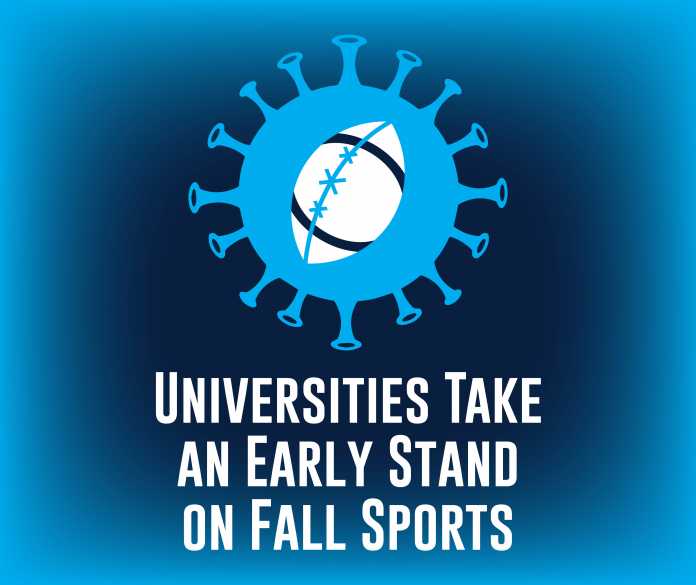Multiple universities have announced that they have plans in place to resume on-campus activities for the fall. Does that mean football is on the horizon?
On April 30, University of Iowa President Bruce Harreld told the Iowa Board of Regents about the university’s intentions of opening athletic facilities on June 1, including allowing football practices. This has been the most aggressive stance taken by a university so far regarding resuming football amid concerns of the COVID-19 pandemic.
Harreld said he, the staff, and the university will always be worried about the safety of their students, but felt like it was an opportunity to regain a sense of normalcy. After missing spring practice, Harreld said he believes the team needs six to eight weeks of practices to start football on time in the fall.
Along with Iowa, state universities in Alabama, North Carolina, Georgia, North Dakota, and Texas have all expressed plans to open campuses this fall to resume learning. This, of course, is the first major hurdle for fall sports to continue next season. The idea of football returning sounds great in theory, but football returning at the college level would be unrealistic if students aren’t allowed to return to college campuses. The NCAA would undermine their stance that the players are students first and athletes second, and there would be major pushback from students and communities if football players were given special privileges.
The coronavirus has set everyone back, but the most surprising part of Harreld’s statement is the notion so early on that football will be back without question. There’s still a lot of variables at play, including a potential second wave of COVID-19 hitting the country as businesses reopen. And there’s still the question of if fans would be able to attend games.
It starts by bringing up the safety issues. Deciding that the players will be able to meet on June 1 is shortsighted, and some may say even a little naïve. At the very least, more steps need to be taken toward making testing more accessible and getting results faster before the idea of 100,000-seat stadiums full of fans needs to happen.
For example, if safety is the number one priority for the university, then what happens if an athlete gets diagnosed with the virus during the season?
Ohio State and Oregon, two projected college football playoff teams, play Week 1. If one of the players from either side is showing symptoms a couple of weeks after that game, and a player is diagnosed with COVID-19 weeks after the game, are both teams supposed to forfeit their next couple of games while they are quarantined? Not only does that put every team they play at risk, including the coaching staffs and fans of both teams, but it also puts the other teams on their respective schedules at risk. Then on the football side of it, the diagnosis could jeopardize both teams’ potential playoff hopes. If the NCAA isn’t able to offer a solution to that problem, then it’s hard to envision college football happening in August of 2020.
While we all want to return to a sense of normalcy, a time like this always means we should err on the side of safety. There is still time to find solutions for college football to happen, whether it happens next spring or delaying football until late October. But making the decision in early May that football season will happen in late August could be dangerous if the ramifications are not considered.
Written by: Kyle Grondin














